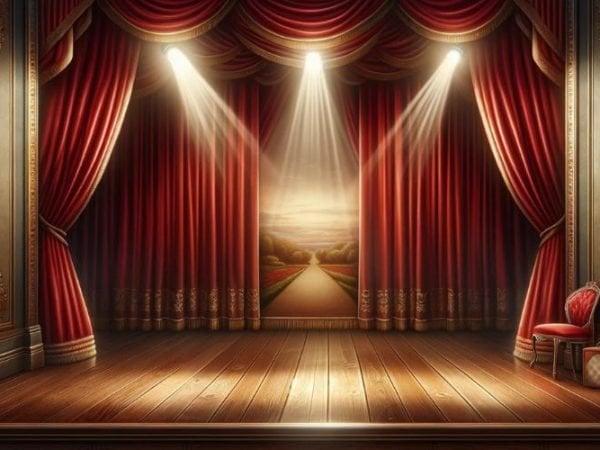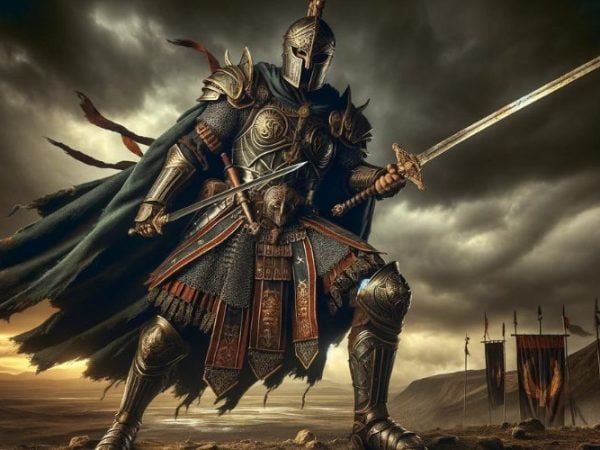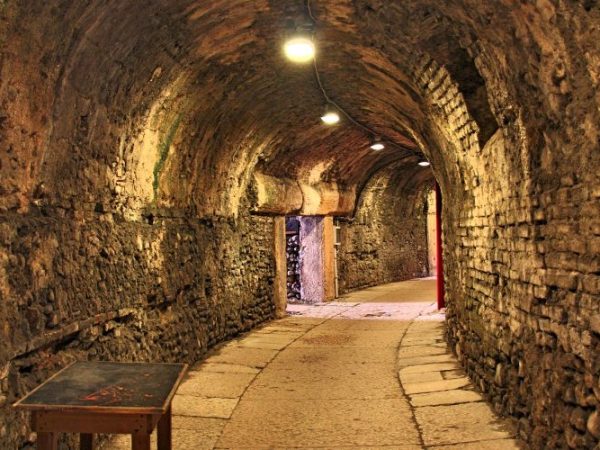Symbolism and Meaning of Tarot Cards through Alejandro Jodorowsky’s Lens
Alejandro Jodorowsky, a multifaceted artist renowned for his work in film and writing, has delved deeply into the world of Tarot, offering profound insights into its symbolism and meanings. His exploration primarily revolves around the Tarot de Marseille, a classic Tarot deck that has been a subject of fascination and study for enthusiasts and scholars alike. This article aims to explore the symbolism and meaning of the main Tarot cards, the Major Arcana, through the lens of Jodorowsky, focusing on the psychological aspects and implications of each card, and shedding light on how they can be interpreted and applied for personal insight and development. 1
Table of Contents
The Essence of Tarot
The Tarot has a rich and diverse history, with its origins shrouded in mystery. It is believed to have emerged in the 15th century, initially serving as a card game before evolving into a tool for divination. The Tarot deck is divided into two main categories: the Major Arcana and the Minor Arcana. The Major Arcana consists of 22 cards, each representing archetypal images and themes that resonate with universal human experiences, while the Minor Arcana, comprising 56 cards, deals more with day-to-day matters.
Jodorowsky approaches the Tarot not merely as a means for fortune-telling but as a profound spiritual and philosophical system. He delves into the intricate symbolism of each card, unraveling the layers of meaning embedded within them. However, for the purpose of this article, the focus will be on the psychological aspects of the cards’ symbolism, exploring how they reflect the complexities of the human psyche and can be used as a mirror to gain deeper understanding of oneself.
In Jodorowsky’s interpretation, each card of the Major Arcana serves as a symbolic representation of different facets of human experience and consciousness, offering insights that can aid in self-reflection and personal growth. By exploring the symbolism inherent in these cards, individuals can uncover nuanced perspectives on their inner workings, motivations, and challenges, potentially leading to enhanced self-awareness and psychological well-being.
The Major Arcana
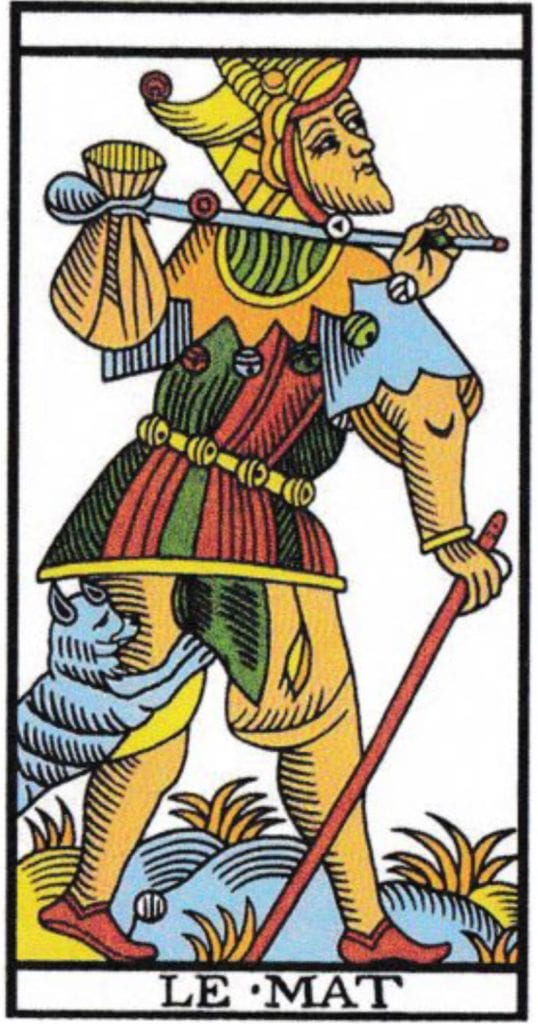
The Fool
In Jodorowsky’s exploration of the Tarot de Marseille, The Fool is a symbol of beginnings and infinite possibilities. It represents the untapped potential and the open-ended journey of life. Psychologically, this card invites reflection on one’s openness to new experiences and willingness to step into the unknown. It encourages embracing uncertainty and viewing life with a curious and adventurous spirit. Jodorowsky’s interpretation invites individuals to consider their approach to life’s journey and to reflect on whether they are embracing their path with openness and a willingness to learn and grow.
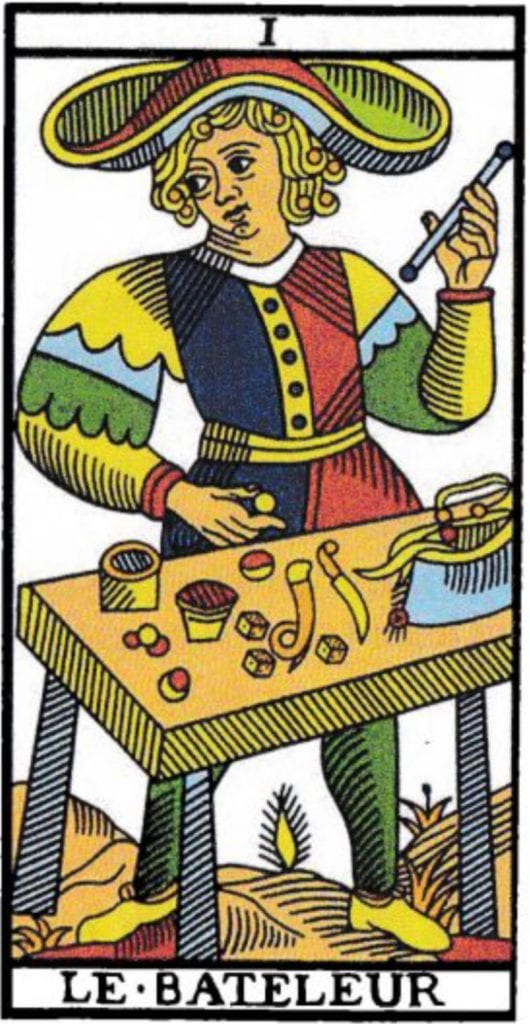
The Magician
The Magician is a symbol of manifestation and resourcefulness. It represents the ability to use one’s talents and resources to create and shape reality. This card reflects one’s self-efficacy and confidence in their abilities to make things happen. It encourages an exploration of one’s skills and talents and a reflection on how these can be utilized to achieve one’s goals and desires. Jodorowsky’s insights into this card prompt individuals to consider their potential for innovation and creation, and to reflect on their capacity to turn ideas into reality.
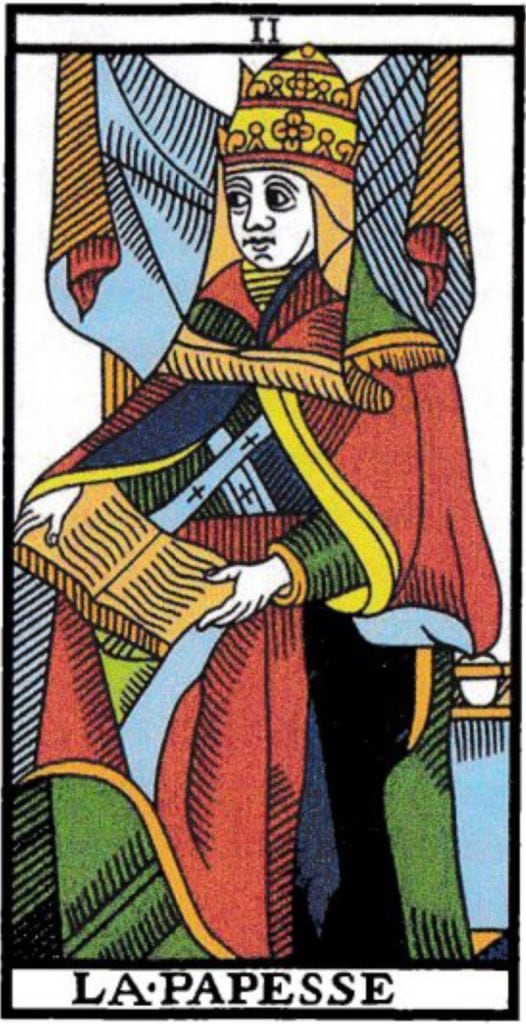
The High Priestess
The High Priestess is a symbol of intuition and unconscious knowledge. It represents the unseen, the mysterious, and the intuitive aspects of the mind. This card invites individuals to explore their inner worlds and to trust their intuitive instincts. It encourages a deeper connection with one’s inner wisdom and a trust in the knowledge that is not always consciously accessible. Jodorowsky’s interpretation of this card offers a pathway to understanding the mysteries of the mind and the untapped wisdom that resides within, prompting reflection on the balance between conscious reasoning and intuitive knowing.
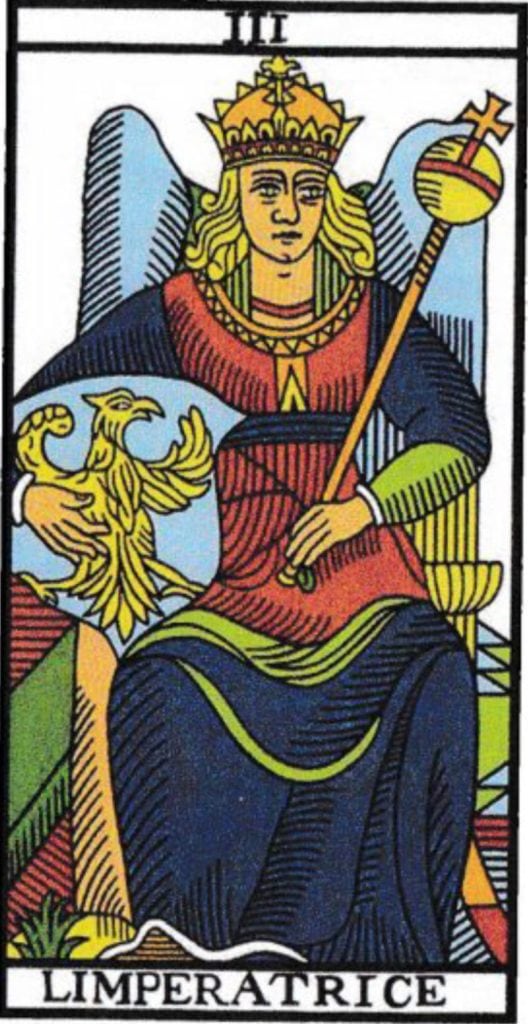
The Empress
Jodorowsky interprets The Empress as a symbol of nurturing, abundance, and creation. Psychologically, it represents the fertile ground from which life and ideas can flourish. It invites individuals to explore their capacity for nurturing and creation, reflecting on their ability to bring forth life, whether it be in the form of new ideas, projects, or relationships. It encourages a connection with the feminine aspects of the self, promoting a harmonious balance between giving and receiving, nurturing and being nurtured. Jodorowsky’s insights into this card prompt individuals to consider their relationship with abundance and creation, and to reflect on their ability to cultivate a nurturing and fruitful environment for themselves and others.
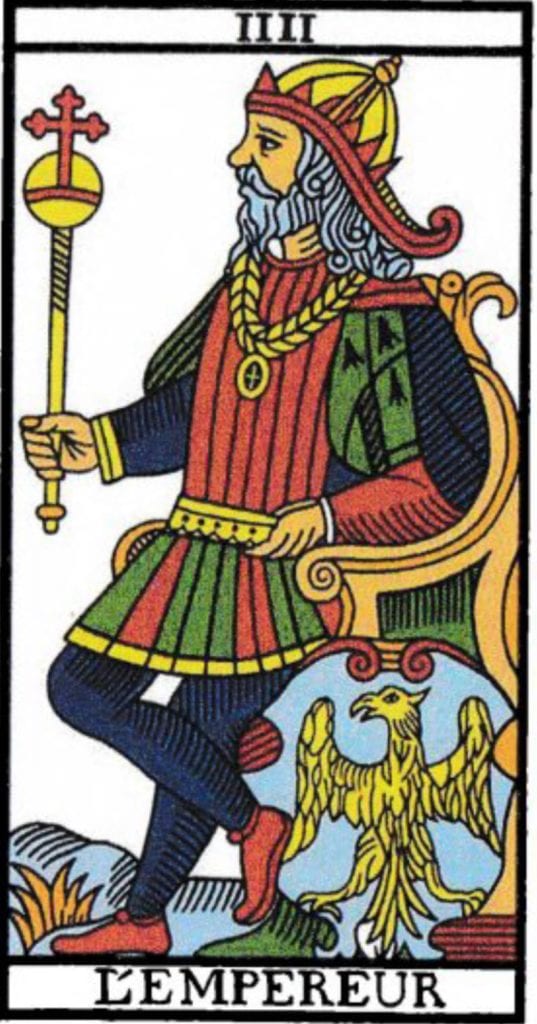
The Emperor
The Emperor is a symbol of authority, structure, and control. It represents the organizing principle of the mind and the ability to establish order and discipline. It invites reflection on one’s leadership abilities, sense of responsibility, and the establishment of rules and boundaries. It encourages individuals to consider their approach to authority, both exerted and experienced, and to reflect on their ability to create structure and order in their lives.
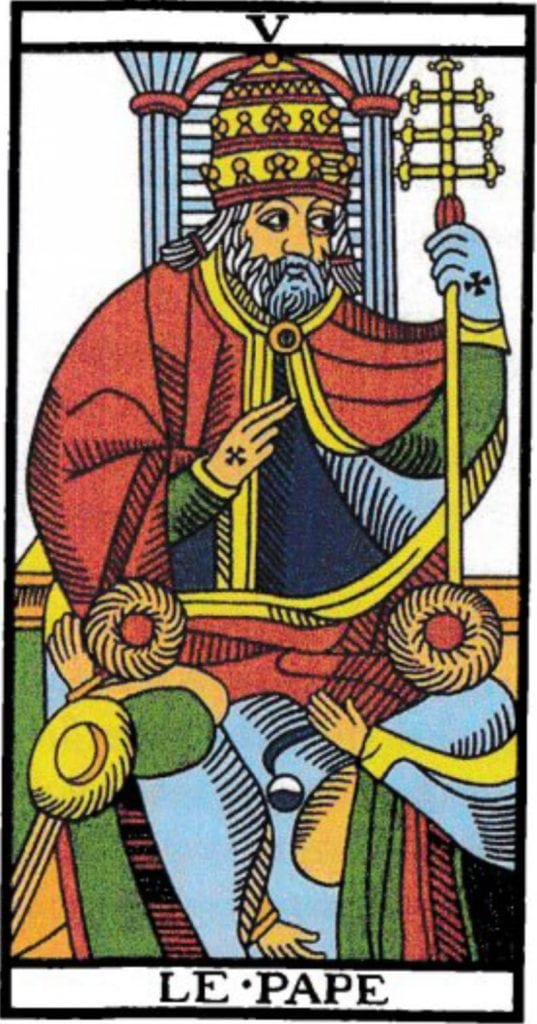
The Hierophant
The Hierophant symbolizes tradition, moral values, and spiritual wisdom. It represents the internalization of cultural norms and moral values. It invites individuals to explore their belief systems and the values they uphold, encouraging reflection on the influence of societal norms and traditions on one’s thoughts and behaviors. It prompts consideration of the role of spiritual and moral guidance in one’s life.
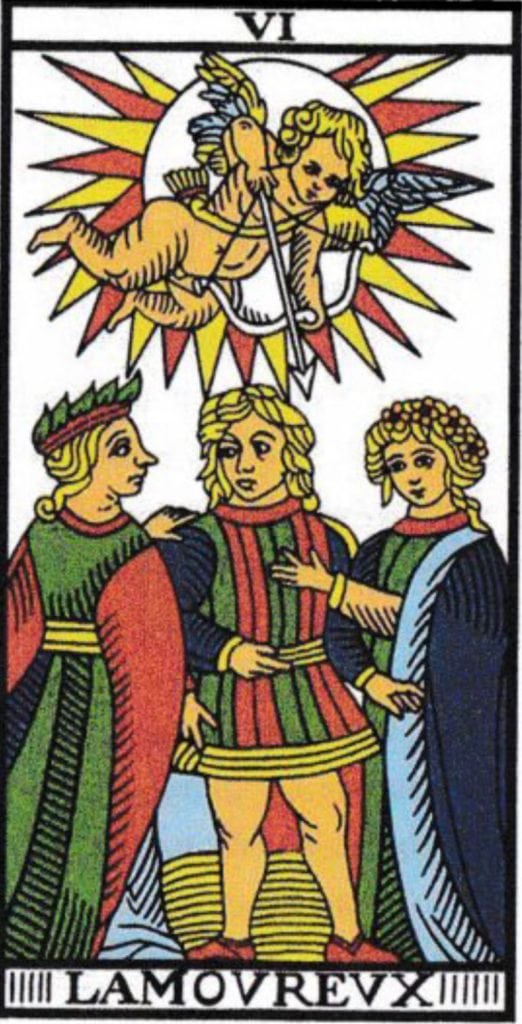
The Lovers
Jodorowsky interprets The Lovers as a symbol of union, choice, and partnership. It represents the integration of opposites and the choices that shape one’s relationships. It encourages exploration of one’s desires and values in relationships and reflection on the dynamics of partnership and commitment. It invites individuals to consider the choices they make in love and the integration of different aspects of the self in relationships.
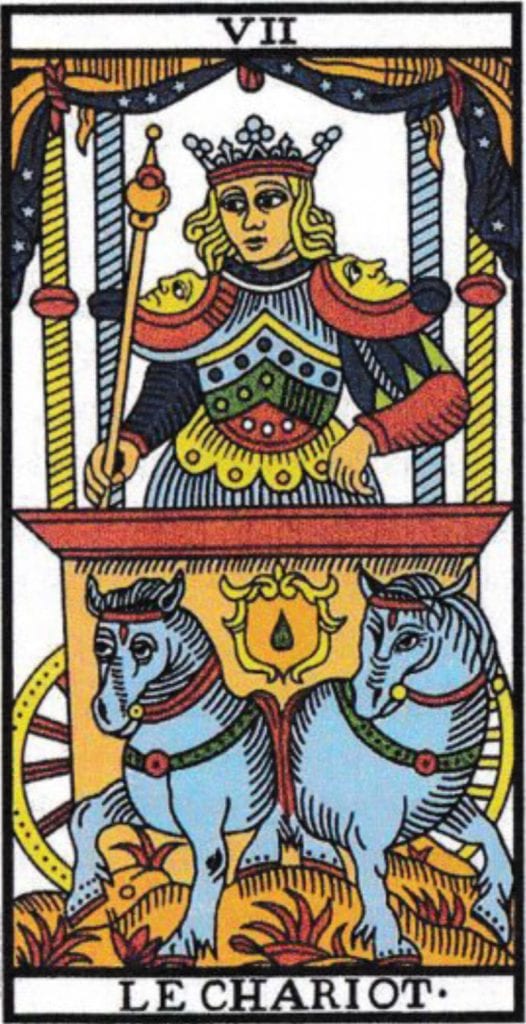
The Chariot
The Chariot symbolizes willpower, determination, and victory.It represents the drive to succeed and the ability to overcome obstacles. It invites reflection on one’s ambitions, motivations, and the pursuit of goals. It encourages individuals to consider their direction and determination and to reflect on their ability to navigate life’s challenges with resilience and focus.
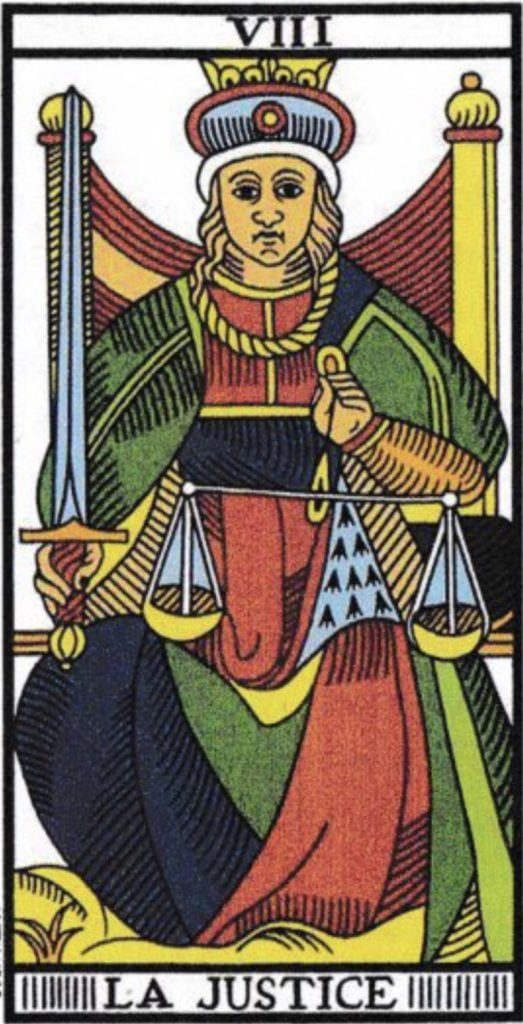
Justice
Jodorowsky sees Justice as a symbol of balance, fairness, and ethical principles. It represents the moral compass and the ability to make fair and just decisions. It invites individuals to reflect on their sense of justice and their approach to ethical dilemmas. It encourages exploration of one’s values and principles and reflection on the pursuit of balance and fairness in one’s life.
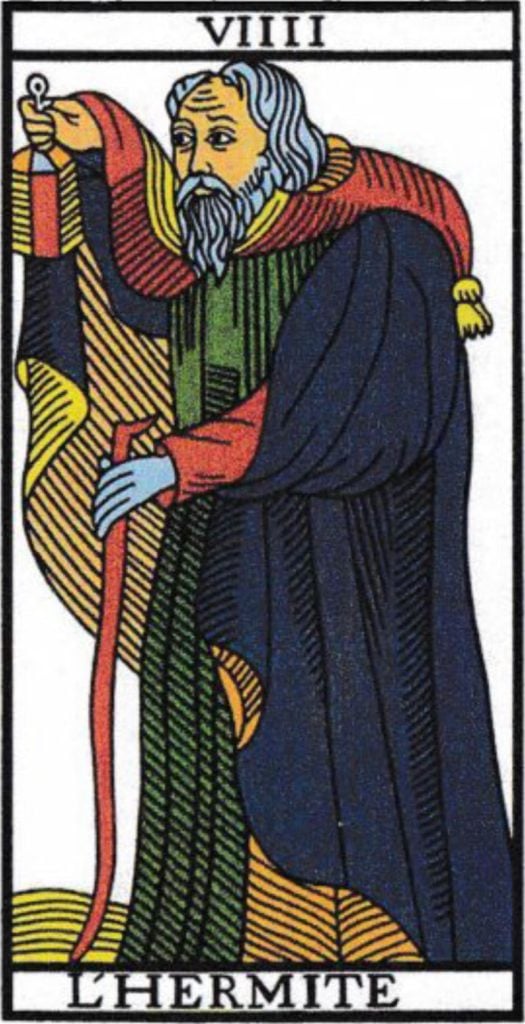
The Hermit
The Hermit symbolizes introspection, solitude, and inner guidance. It represents the search for inner wisdom and the journey inward. It invites reflection on one’s need for solitude and introspection and encourages exploration of the inner world and the wisdom it holds. It prompts individuals to consider their approach to self-reflection and inner exploration.
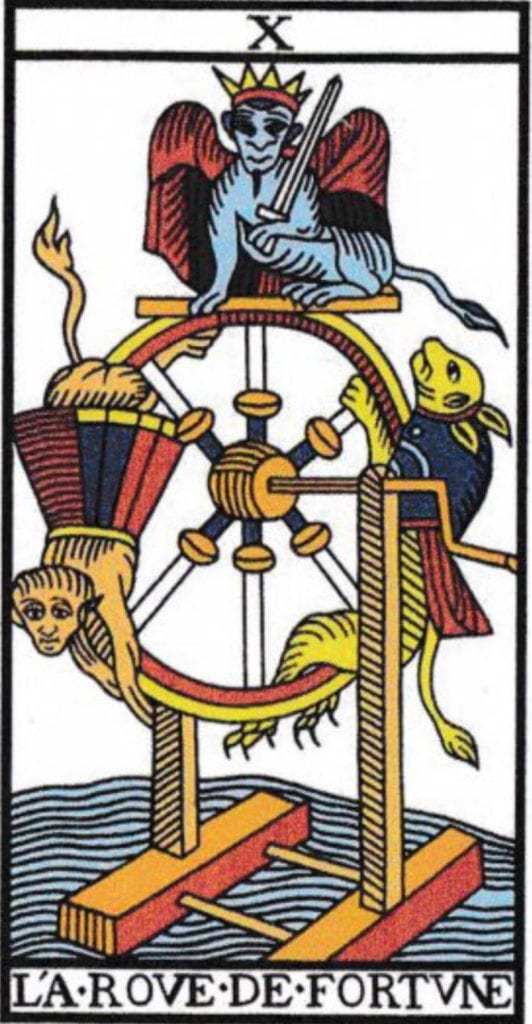
Wheel of Fortune
The Wheel of Fortune is a symbol of cycles, change, and destiny. It represents the acceptance of life’s ups and downs and the cyclical nature of experiences. It invites individuals to reflect on their approach to change and their ability to go with the flow of life. It encourages acceptance of the inevitable changes and cycles in life and reflection on one’s place in the grand scheme of things.
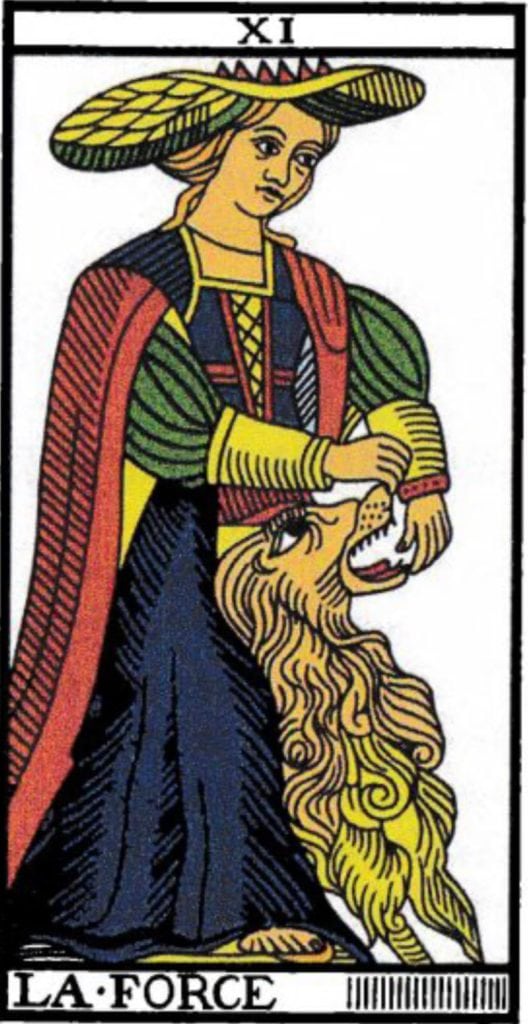
Strength
Strength symbolizes inner strength, courage, and compassion. It represents the ability to face challenges with resilience and to approach situations with compassion and understanding. It invites reflection on one’s inner resources and emotional resilience. It encourages individuals to consider their approach to challenges and their capacity for empathy and compassion.
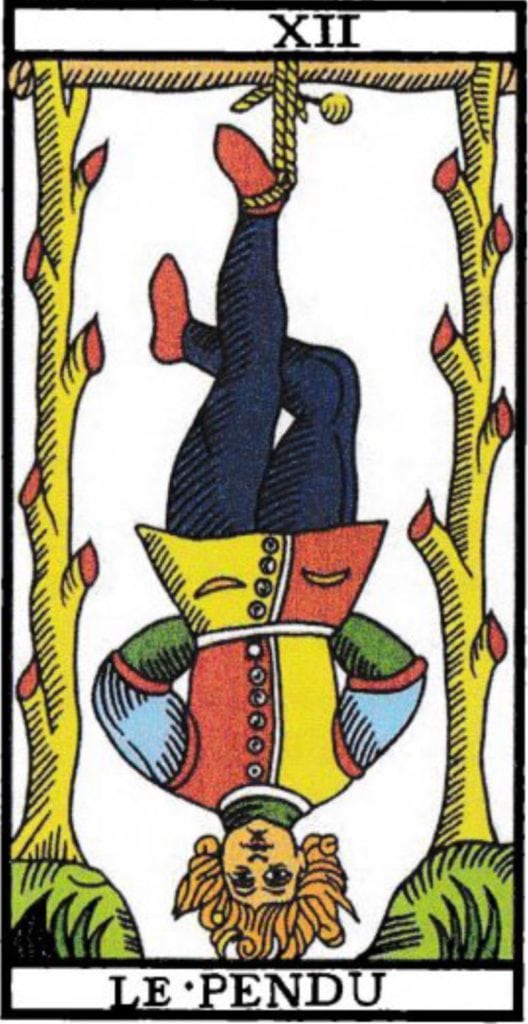
The Hanged Man
The Hanged Man is a symbol of surrender, letting go, and seeing things from a different perspective. It represents the ability to release control and to view situations from a new angle. It invites individuals to reflect on their ability to let go and to see the world from a different viewpoint. It encourages a reevaluation of one’s perspectives and a willingness to surrender to the unknown.
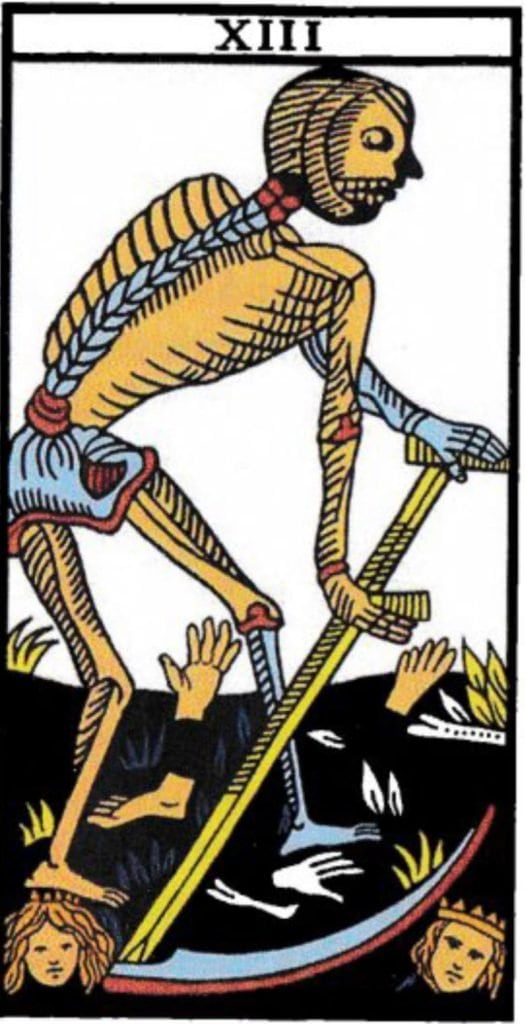
Death
Death symbolizes transformation, endings, and new beginnings. It represents the ability to let go of the old to make way for the new. It invites reflection on one’s approach to change and transformation and encourages acceptance of the inevitable endings and beginnings in life. It prompts individuals to consider their ability to transform and to embrace new possibilities.

Temperance
Temperance is a symbol of balance, moderation, and harmony. It represents the ability to find equilibrium and to integrate opposing forces. It invites individuals to reflect on their approach to balance and moderation and encourages the integration of different aspects of the self. It prompts consideration of one’s ability to create harmony in their life.
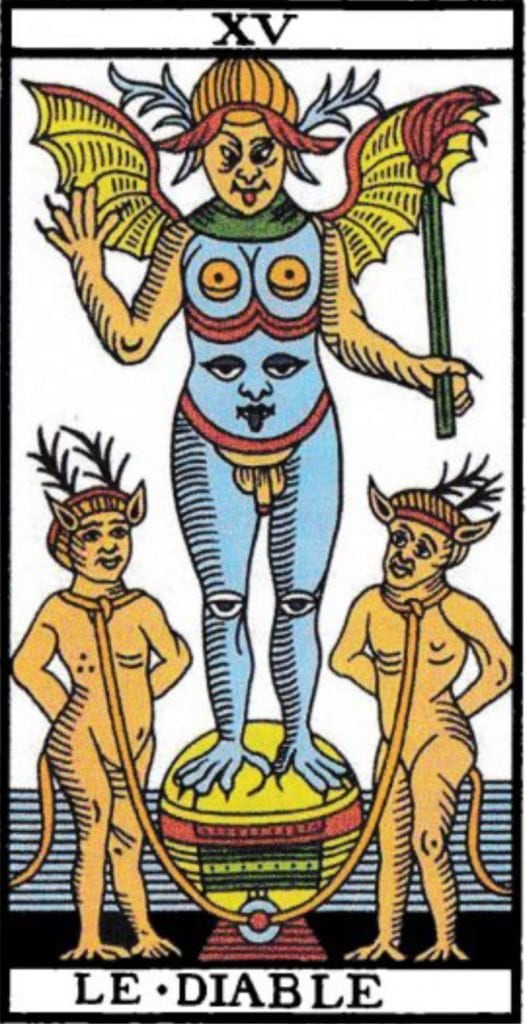
The Devil
The Devil symbolizes temptation, bondage, and materialism. It represents the shadow side and the unconscious drives that can lead to self-destruction. It invites reflection on one’s temptations and attachments and encourages exploration of the shadow aspects of the self. It prompts individuals to consider their relationship with material desires and the unconscious forces at play in their lives.
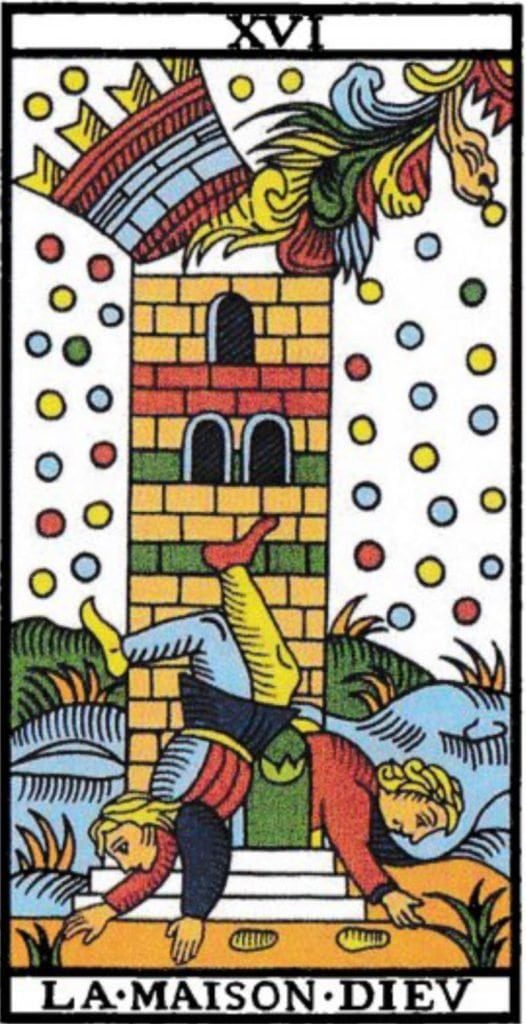
The Tower
The Tower is a symbol of sudden upheaval, destruction, and revelation. It represents the shattering of illusions and the breaking down of false structures. It invites individuals to reflect on their foundations and the sudden changes that can lead to transformation. It encourages a reevaluation of one’s beliefs and structures and prompts consideration of the revelations that can come from destruction.
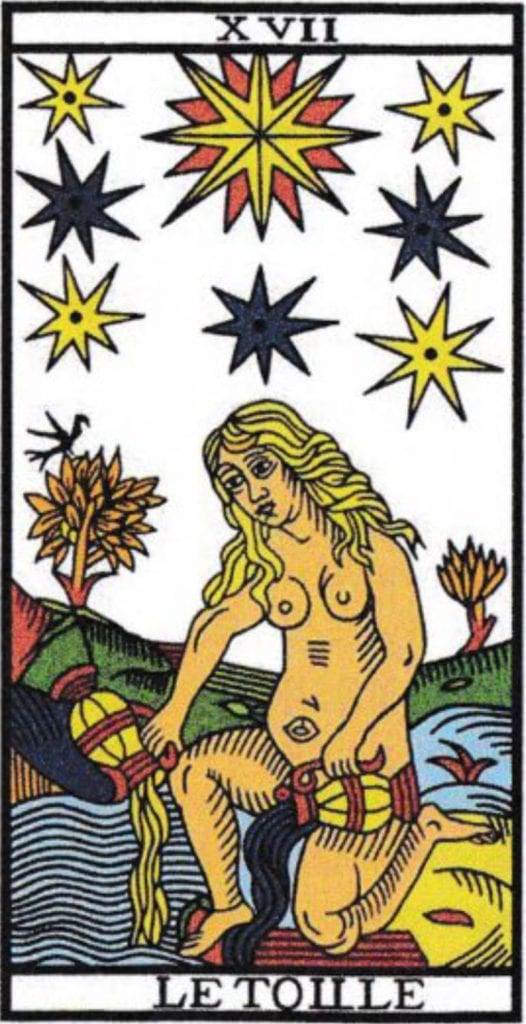
The Star
The Star symbolizes hope, inspiration, and serenity. It represents the ability to find hope in the darkest times and to be inspired by the beauty of life. It invites reflection on one’s sources of inspiration and hope and encourages a connection with the higher aspects of the self. It prompts individuals to consider their ability to find serenity and inspiration in life.
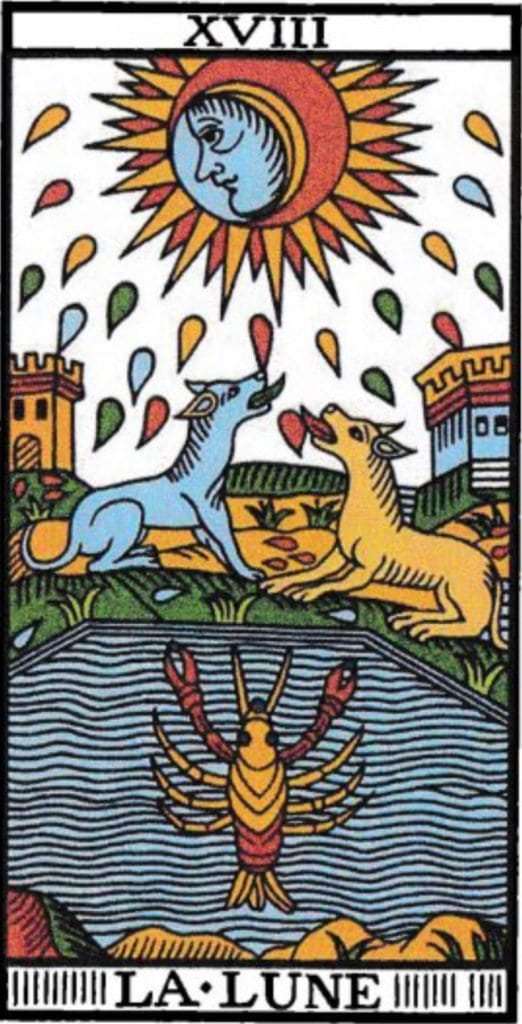
The Moon
The Moon is a symbol of intuition, dreams, and the unconscious. It represents the realm of the subconscious and the ability to connect with one’s inner world. It invites individuals to explore their dreams and intuitions and to reflect on the mysteries of the unconscious mind. It encourages a deeper connection with the inner self and prompts exploration of the unseen realms of the psyche.
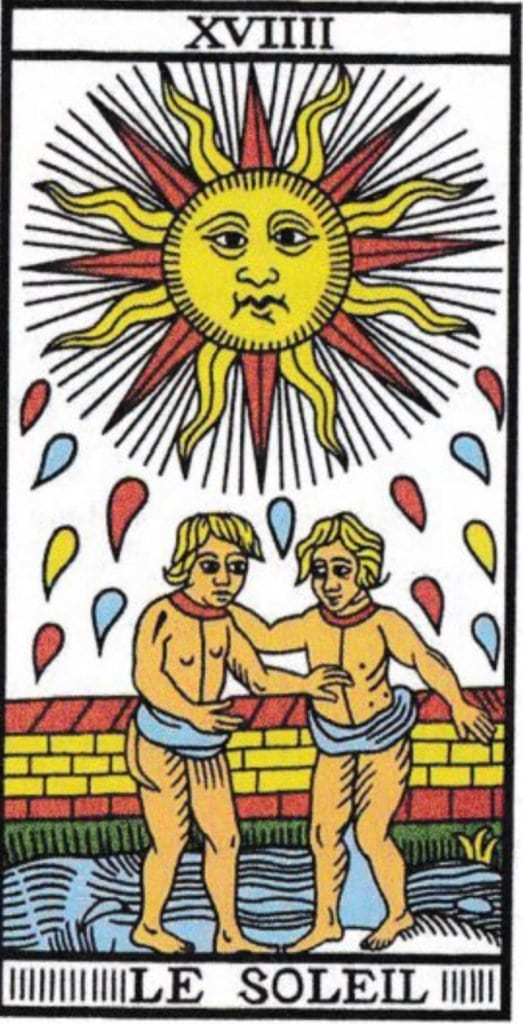
The Sun
The Sun symbolizes vitality, joy, and enlightenment. It represents the ability to experience joy and to see the light in all situations. It invites reflection on one’s sources of joy and light and encourages a connection with the vital forces of life. It prompts individuals to consider their ability to find joy and enlightenment in their lives.
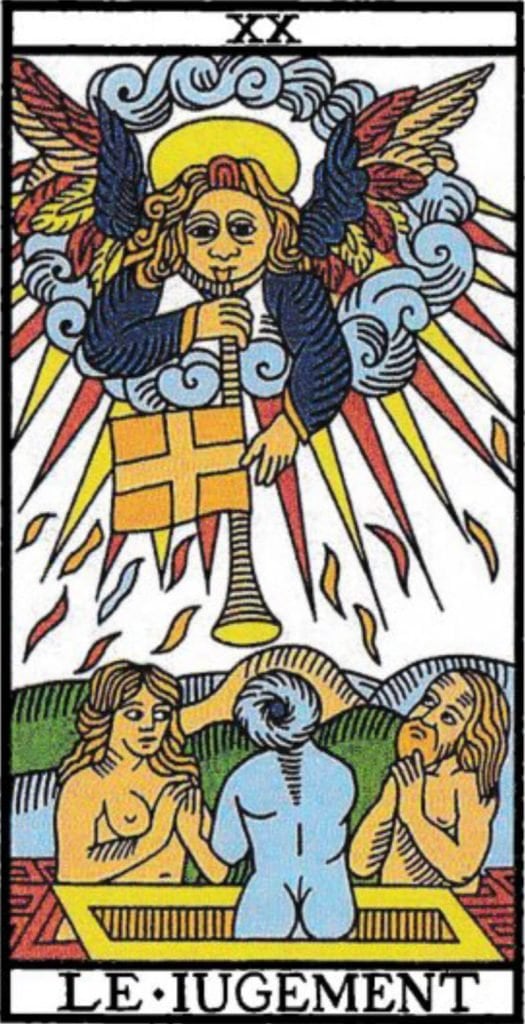
Judgment
Judgment is a symbol of evaluation, reflection, and inner calling. It represents the ability to assess one’s life and to respond to one’s inner calling. It invites individuals to reflect on their life’s journey and to heed the call of their higher self. It encourages a reevaluation of one’s path and prompts consideration of one’s inner voice and calling.
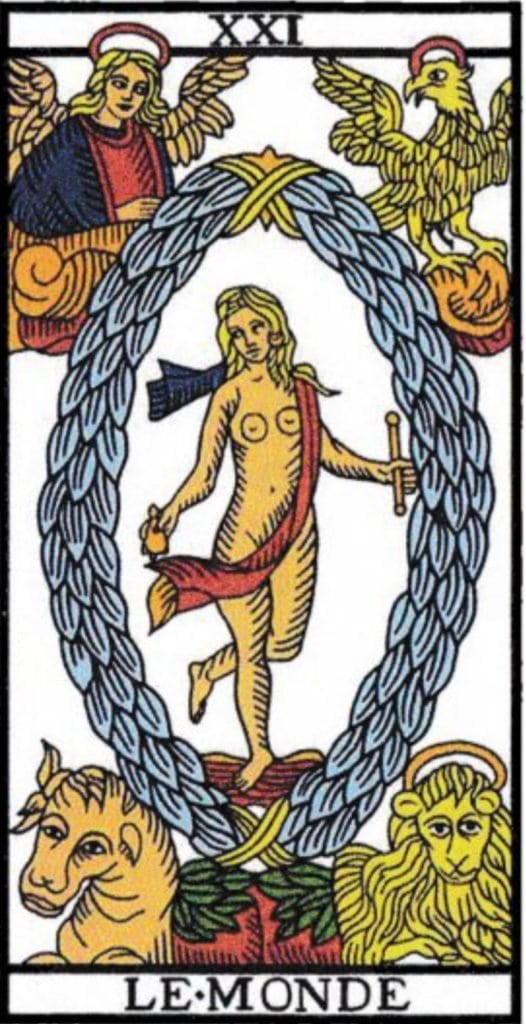
The World
The World symbolizes completion, fulfillment, and celebration. Psychologically, it represents the attainment of one’s goals and the realization of one’s potential. It invites reflection on one’s achievements and the fulfillment of one’s desires. It encourages a celebration of life and prompts consideration of one’s place in the world.
Jodorowsky’s Unique Insights
Alejandro Jodorowsky’s interpretations of the Tarot de Marseille are deeply enriched by his multifaceted background in arts and spirituality. His unique insights into the Tarot are not merely reflections of traditional symbolism but are imbued with his distinctive perspectives and profound understanding of human nature and the cosmos.
Jodorowsky approaches the Tarot de Marseille with a depth that goes beyond the superficial, exploring the intricate symbolism of each card and unraveling the layers of meaning embedded within them. His interpretations are not isolated to the esoteric realm but are intertwined with psychological insights, offering a holistic view of human experience and consciousness. He sees each card as a mirror, reflecting different facets of human existence and providing a pathway to self-discovery and personal growth.
Jodorowsky’s artistic sensibilities deeply influence his interpretations of the cards. His background in filmmaking and visual arts allows him to perceive the rich imagery of the Tarot in a unique light, drawing out subtle nuances and hidden meanings that might be overlooked by others. He approaches each card as a piece of art, a visual representation of universal themes and human experiences, allowing for a deeper and more nuanced understanding of its symbolism.
His spiritual perspectives also play a crucial role in shaping his view of the Tarot. Jodorowsky sees the Tarot as a spiritual tool, a means to explore the mysteries of existence and to connect with the higher aspects of the self. However, his spiritual insights are not dogmatic or rigid; they are fluid and adaptable, allowing for a wide range of interpretations and applications. He integrates spiritual wisdom with psychological insights, creating a balanced and holistic approach to understanding the Tarot.
The goals of the Tarot archetypes study
Journey of Self-Discovery
Each card in the Major Arcana symbolizes different facets and stages of one’s life and psyche, representing a journey through the various aspects of self. As one progresses through the numbers of the Major Arcana, they embark on a journey of self-discovery, exploring deeper layers of their consciousness, uncovering hidden aspects of their psyche, and gaining insights into their true nature and the mysteries of their existence. This journey is not linear but is a spiral, where each card offers a new perspective and a deeper understanding of oneself, allowing for continuous exploration and discovery.
Transformation and Evolution
The progression through the Major Arcana also symbolizes a transformative process. Each card represents a step in the evolutionary journey of the soul, reflecting the continuous growth, change, and transformation inherent in human experience. The lessons and insights gained from each card can lead to profound transformations, enabling individuals to shed old patterns, embrace new possibilities, and evolve into more authentic and integrated versions of themselves.
Psychological Experiences and Development
The symbolism in each card of the Major Arcana reflects different psychological states, experiences, and developmental stages. For example, The Fool represents the beginning of the journey, symbolizing potential and openness to new experiences, while The World represents completion and fulfillment, symbolizing the attainment of one’s goals and the realization of one’s potential. Each card in between reflects different psychological experiences and challenges, representing the diverse and multifaceted nature of human psychological development.
Integration and Wholeness
The journey through the Major Arcana ultimately leads to the integration of the various aspects of the self, culminating in a sense of wholeness and unity. By engaging with the symbolism of the cards and reflecting on their meanings, individuals can integrate the lessons and insights gained from each card, achieving a balanced and harmonious state of being and realizing the interconnectedness of all aspects of existence.
Practical Application
The progression through the numbers of the Major Arcana in Tarot can be seen as a symbolic representation of an individual’s journey of self-discovery and transformation, reflecting various stages and aspects of human psychological experiences and development.
To interact with the Tarot in a psychological aspect, based on Jodorowsky’s interpretations, readers can undertake the following practical steps:
1. Mindful Reflection:
- Description: Select a card from the Major Arcana each day and spend some time reflecting on its symbolism and meaning. Consider how the themes of the card might be manifesting in your life and what insights it offers into your psychological state and personal experiences.
- Purpose: This practice can aid in developing self-awareness and understanding, allowing for deeper insights into one’s thoughts, feelings, and behaviors.
2. Journaling:
- Description: After reflecting on a card, journal your thoughts, feelings, and insights that arise. Explore how the symbolism of the card resonates with your personal experiences and psychological states.
- Purpose: Journaling can facilitate a deeper exploration of the self, providing a space to process and integrate the insights gained from the cards.
3. Meditation:
- Description: Meditate with a chosen card, focusing on its imagery and symbolism. Allow any thoughts, feelings, or insights to arise naturally, observing them without judgment.
- Purpose: Meditation can help in connecting with the subconscious mind, uncovering hidden aspects of the psyche, and gaining deeper insights into one’s inner world.
5. Integrative Discussion:
- Description: Discuss your reflections and insights with a trusted friend, family member, or therapist, exploring the psychological implications and personal relevance of the cards.
- Purpose: Sharing and discussing insights can lead to a deeper understanding and integration of the lessons from the cards, and provide different perspectives and interpretations.
6. Intention Setting:
- Description: Based on the insights gained from the cards, set intentions for personal growth and development, focusing on areas such as self-awareness, emotional healing, and behavioral change.
- Purpose: Setting intentions can provide direction and focus, aiding in the transformation and evolution of the self.
8. Archetypal Symbolism Exploration:
- Description: Seek the symbolism of a specific Arcanum-archetype in your life and identify your current state with a certain stage of development symbolized by this Arcanum. Reflect on how the archetypal themes and symbolism of the card resonate with your current life situation and psychological state.
- Purpose: This practice can help in recognizing the active archetypes within one’s life and psyche, providing insights into one’s current developmental stage and facilitating a deeper connection with the universal themes represented by the Tarot.
- Jodorowsky, Alejandro, and Marianne Costa. “The Way of Tarot: The Spiritual Teacher in the Cards.” Destiny Books, 2009.[↩]

